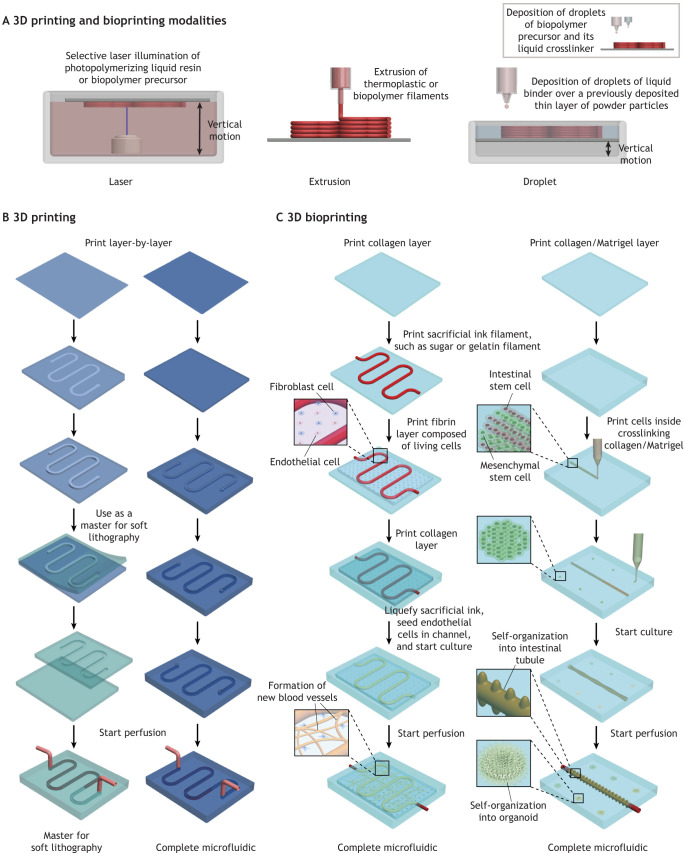Fig. 3.
Microfabrication of microfluidic devices using 3D printing and bioprinting technologies. (A) Modalities of 3D printing and bioprinting technology for layer-by-layer microfabrication, including laser-initiated photopolymerization of a synthetic resin or biopolymer precursor, extrusion of a thermoplastic or biopolymer filament, and deposition of droplets of a liquid binder over metals, sand or ceramics, which are available in granular form. Inset (grey box) shows droplet-based bioprinting. (B) 3D printing of synthetic polymers for microfabrication of molds and complete microfluidic devices. (C) 3D bioprinting of biopolymers, living cells and physiological signaling molecules for microfabrication of a microfluidic device consisting of an interconnected vascular network (left) and a microfluidic device consisting of a perfusable intestinal tube (right). Re-drawn based on published studies (Brassard et al., 2021; Lee et al., 2014b; Miller et al., 2012).

